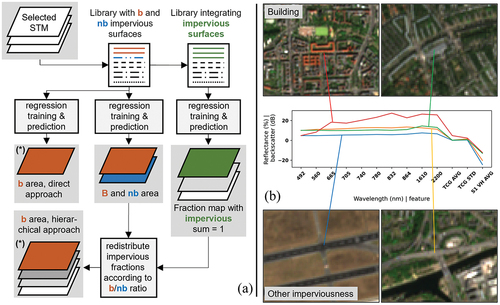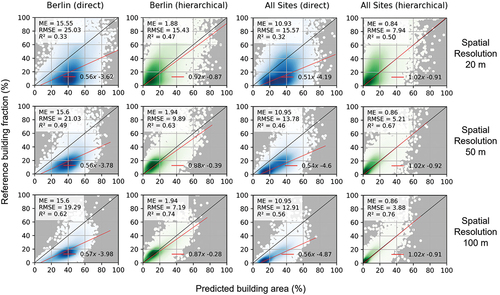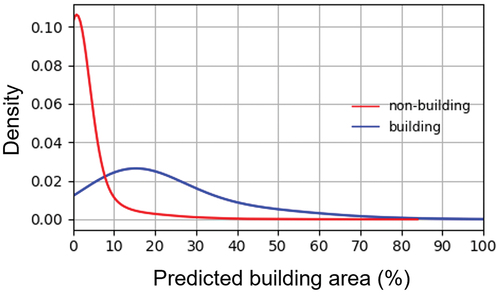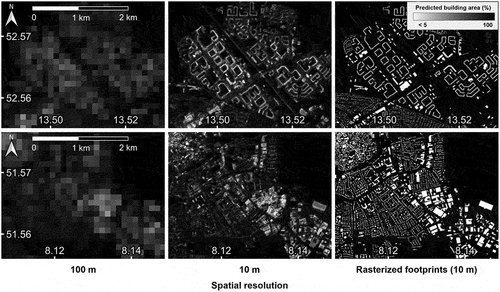Figures & data
Table 1. Class hierarchy and number of pure reference samples. Bold: Target classes.
Figure 1. A: Direct and hierarchical regression-based unmixing approach with synthetically mixed training data from a pure surface feature library. STM = Spectral-temporal metrics, imp = impervious surfaces, b = building, nb = non-building impervious surfaces. Building area in (*) was validated. B: Example feature sets for two selected building and non-building impervious surfaces. TCG = Tasselled Cap Greenness, AVG = Average, STD = Standard Deviation, S1 VH AVG = Average Sentinel-1 VH Backscatter.

Figure 2. Density scatter plots of predicted and reference building area for the direct approach (blue) and the hierarchical approach (green) for 20 m (top), 50 m (centre) and 100 m (bottom) resolutions.



